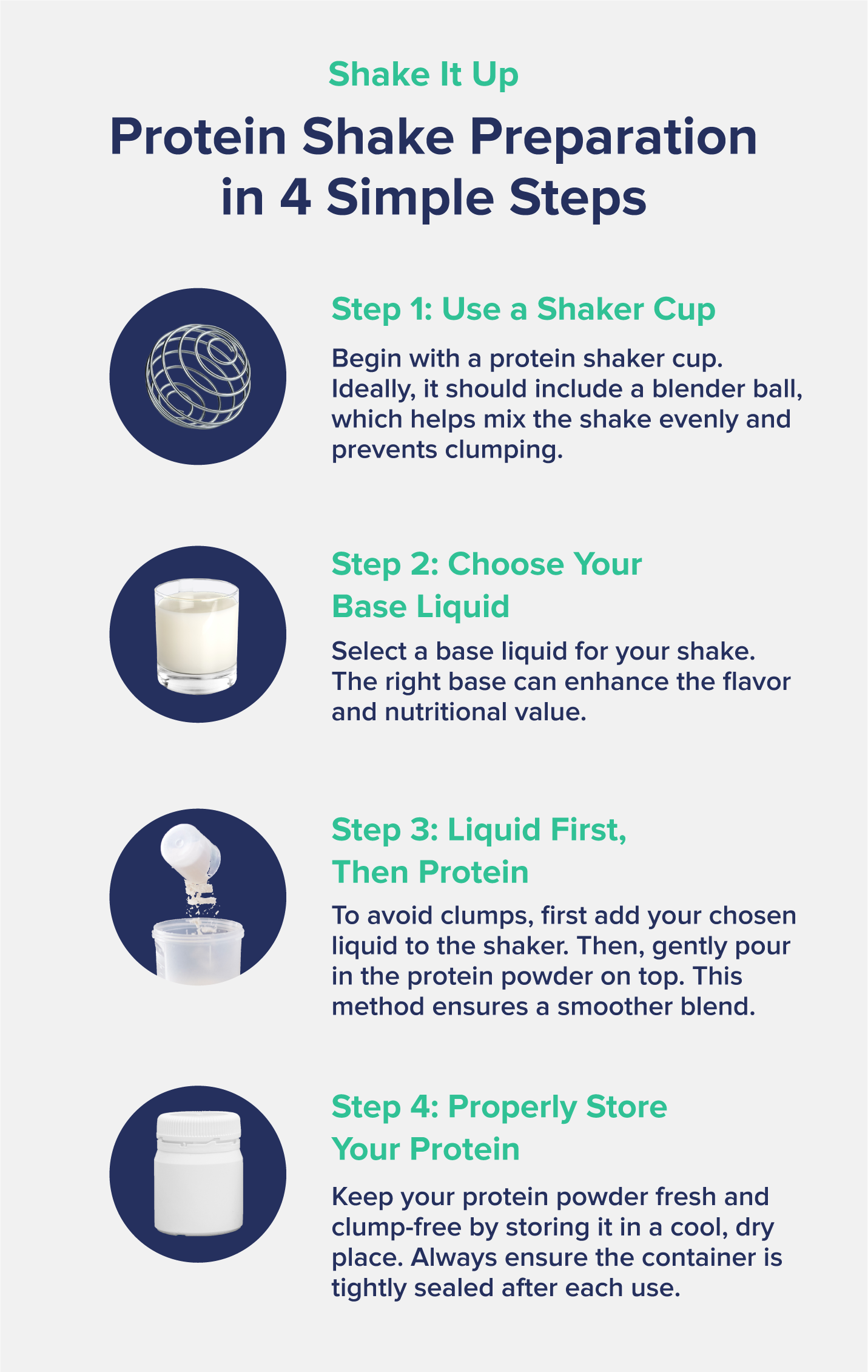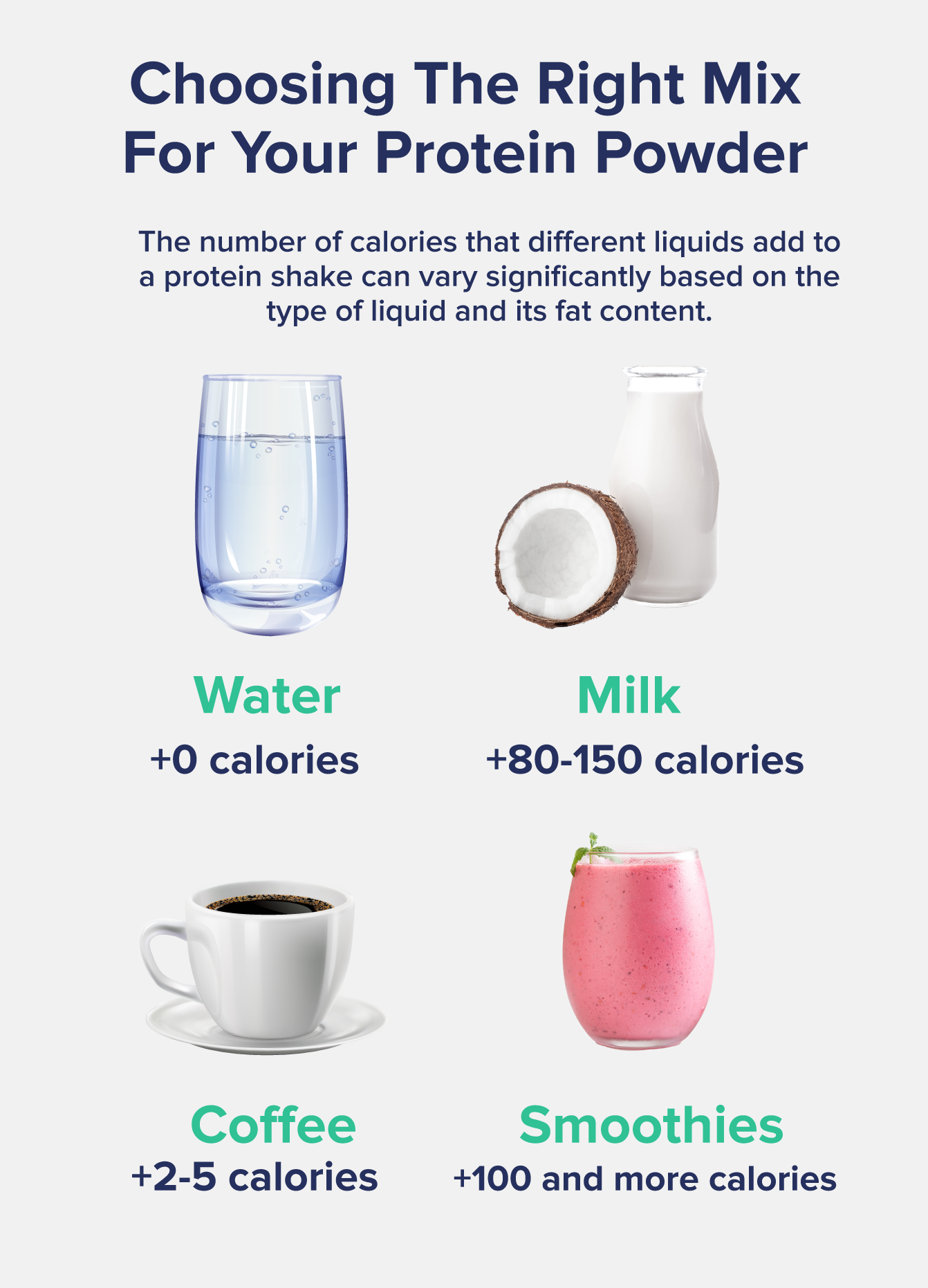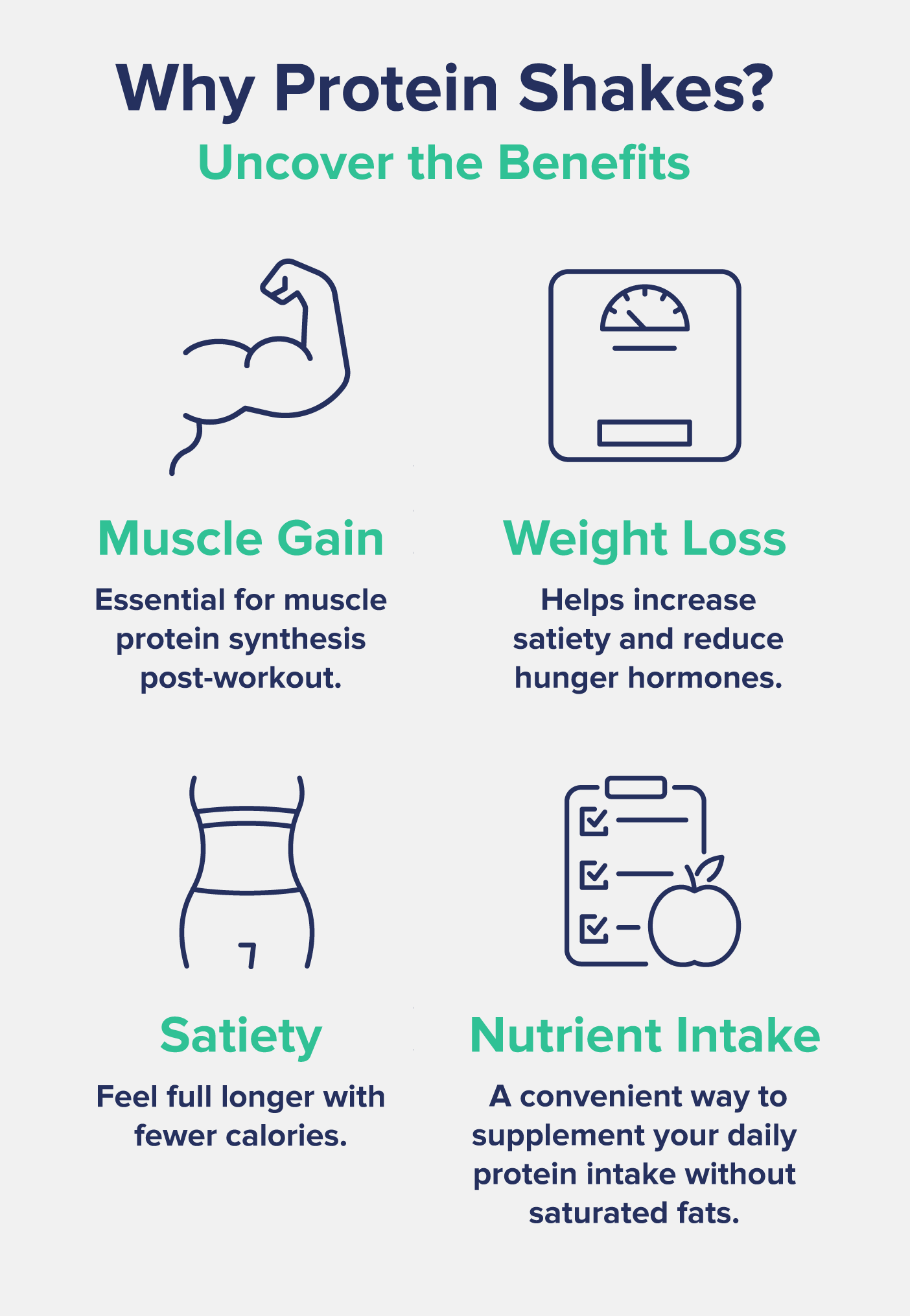Talk to a Registered Dietitian and use INSIDER20 for 20% off!
Talk to a real Dietitian for only $99: Schedule Now
This post contains links through which we may earn a small commission should you make a purchase from a brand. This in no way affects our ability to objectively critique the products and brands we review.
Evidence Based Research To fulfill our commitment to bringing our audience accurate and insightful content, our expert writers and medical reviewers rely on carefully curated research.
Read Our Editorial Policy
Protein shakes aren’t just for the gym bros!
Yup, that’s right. Protein powder can be used in many ways––it’s an easy way to increase your daily protein intake to promote recovery from exercise, increase or maintain muscle, and make it easier to achieve weight loss goals.
On top of that, protein shakes are convenient, nutritious, low-calorie, and very tasty, especially when you find a flavor or liquid combination that best suits your taste buds.
The truth is that protein shakes aren’t all that complicated––you can easily throw a scoop of powder and some water into a glass and call it a day.
However, there are some ways to make the experience of drinking them a bit more enjoyable and enhance the flavor if you get tired of drinking the same flavors day after day.
So, to help you out, we’ve gathered all the top tips for how to make protein shakes, the best protein powders, what liquids to mix them with, and ways to enhance the flavor to make them even more enjoyable. Just for you!
Protein shakes have become a staple among both casual gym goers and professional athletes alike.
This is because they aren’t all that complicated to make, protein powder is fairly affordable, and it’s one of the safest and easiest ways to increase your protein intake.
However, there is a bit of trial and error in finding what works best for you.
Some people can easily tolerate plain shakes with just water and protein powder, while others need a little bit more flavor to make their shakes more palatable.

Step 1: Use a shaker cup
The first step to making protein shakes taste better is definitely purchasing and using a protein shaker cup.
This will help you shake up the liquid and powder more easily and avoid clumping. These will usually come with a blender ball––a ball made of metal wire that can help break up clumps––but these aren’t necessary to use every time.
Step 2: Choose your base liquid
Find a base liquid that you enjoy drinking with your protein powder. There are a few different ones you can use, which we’ll cover in the next section.
Step 3: Liquid first, then protein
Add your liquid to your cup, and then add protein powder. This will help avoid clumping along the bottom edge of your shaker cup.
Step 4: Properly store your protein
If your protein isn’t stored properly, humidity can get into the powder and cause excessive clumping. Make sure you screw the lid back on tight every time and store it in a cool, dry place.
Water is probably the most commonly used base liquid in protein shakes.
This is because it’s generally very accessible and is very unlikely to cause digestive problems.
We recommend adding a scoop of protein powder to 15 to 20 ounces of room-temperature or cold water.
Shake this up in your shaker cup, let it sit for 30 to 60 seconds to allow any clumps to dissolve, shake it again, and enjoy, either by itself or with some food.
Most protein powders are already pretty nutritious and creamy in taste and texture when mixed with water.
However, some people prefer to mix it with milk to further enhance the flavor or texture, increase the nutrient content, or just add extra calories.
You can use either dairy or non-dairy milk, whichever you prefer, but fat-free is good if you’re looking to improve the taste but save on calories, while whole milk can be a good option for those in a bulk phase (trying to gain weight).
Skim, 2%, or reduced-fat milk is also perfectly fine.
If you are lactose intolerant, vegan, or just don’t like dairy milk, non-dairy options will also improve the flavor and add a creamier texture.
We recommend using unsweetened almond milk, soy milk, cashew milk, etc., since protein powders tend to already have artificial or natural non-caloric sweeteners like stevia.
If you’re trying to break out of a protein powder slump, coffee can also enhance your morning protein shake.
While you can just fully replace your water with a homemade or store-bought cold brew (we like Stok or Califia), a 50:50 combination of water and coffee will taste a little less intense.
We suggest sticking to the classics like vanilla protein powder (for a vanilla latte flavor) or chocolate protein powder (for a cafe mocha flavor), but you can add any flavor of protein that you like. Just shake it up and enjoy! To make a hot coffee protein drink, you could also try these coffee creamers from Primal Kitchen (11g of collagen protein) or Vital Proteins (10g of collagen protein).
Let’s say you’ve got a busy morning ahead of you, and you want to take something on the go but need something a bit more filling and nutritious than just a shake.
A protein smoothie is the perfect way to sneak in a protein-packed breakfast complete with healthy fats, carbs, and other nutrients you need to fuel your day.
Just add your protein powder of choice, your base liquid, frozen banana for natural sweetness (peel and slice before freezing!), and your mix-ins.
Here are some examples of additional ingredients you could add:

Deciding on your protein powder will mostly depend on your dietary requirements and if you are sensitive to certain ingredients.
Most people are able to tolerate whey and casein protein very well, but some prefer dairy-free options for easier digestion.
While it is true that most vegetable proteins are not complete proteins, nearly every plant-based protein powder brand these days includes the right balance of amino acids in its products to make them complete!
Protein plays a vital role in muscle protein synthesis to increase lean muscle mass when combined with resistance training.

A high-protein diet can also promote muscle recovery and weight loss by increasing your satiety hormones (GIP and GLP-1) and reducing the hunger hormone (ghrelin) for a more extended period than a diet high in carbohydrates and fats.
In effect, protein can make you feel full quicker and longer with fewer calories.
However, for the same reasons that protein is helpful for losing weight, it can also be hard to eat a lot of it, especially if you’re mainly getting it from dietary protein (animals and plants).
And for those that live a busy lifestyle, preparing or cooking high-protein meals is just not always feasible.
That’s why adding protein powder to your diet is essential––it can help you easily boost your protein intake, helping you reach your daily protein goals. Here are two more helpful guides for you to explore if you’re unsure of when to take protein powder or how much protein powder you need per day.
You can make a protein shake in four easy steps: first, use a shaker cup; second, choose your base liquid (water, dairy or non-dairy milk, or coffee) or make a smoothie; third, add your liquid and then your powder; fourth, properly store your protein powder.
The healthiest protein drinks will contain the fewest artificial sweeteners (such as sucralose) and ingredients (such as artificial colors, cellulose, high fructose corn syrup, etc.) In most cases, though, almost any protein powder that is third-party tested and uses high-quality ingredients will make a healthy protein drink.
We recommend the following products from some of our favorite brands:
Garden of Life Organic Creamy Protein Powder
KOS Organic Plant Protein
NAKED Nutrition Naked Whey
You can absolutely make a protein shake every day to drink. Just be sure that you are not solely relying on protein shakes for your main source of protein. Dietary protein (animal and plant-based) is just as important for our health since it has additional nutrients we just can’t get from protein powder.
We have a fabulous collection of nutritious recipes on our website here. But these smoothie recipes are some of our favorites. Just add your favorite protein powder to any of them!
Healthy Tropical Smoothie Recipe
Berry Banana Smoothie
Chocolate Coffee Smoothie